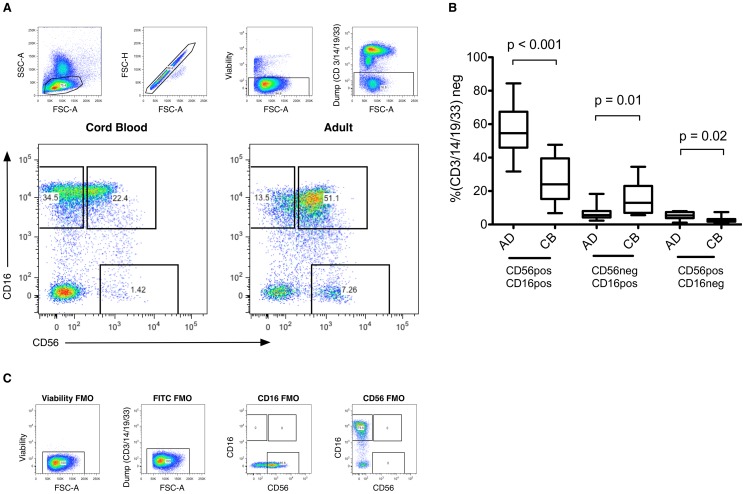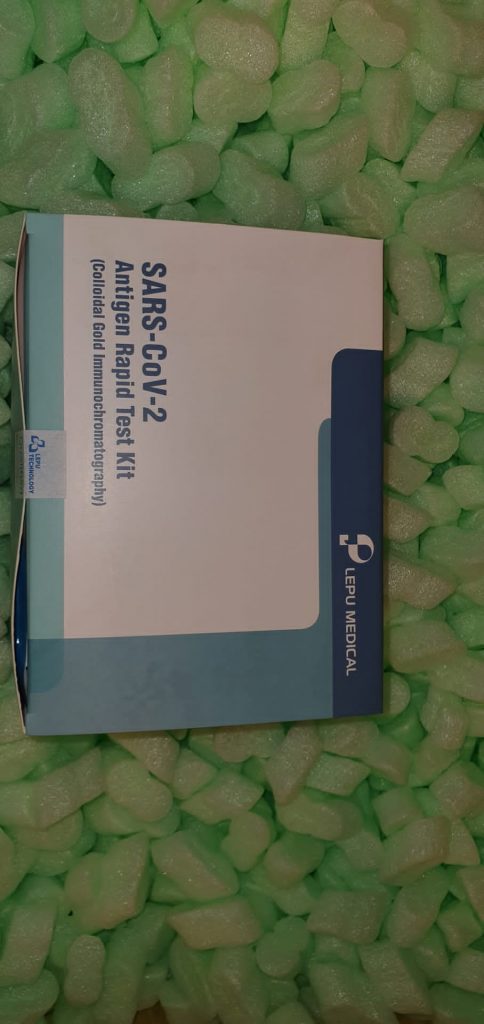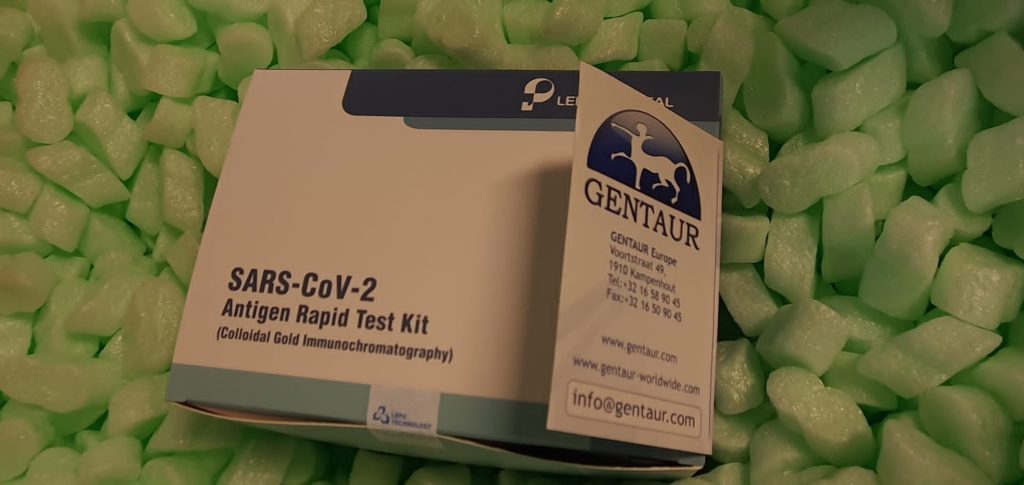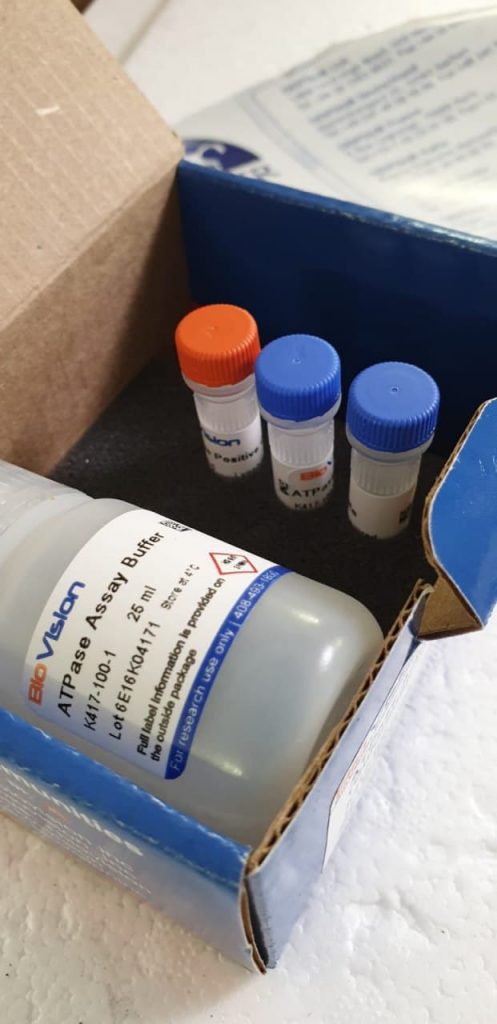Neonatal Natural Killer (NK) cells present useful impairment and enlargement of a CD56 adverse inhabitants of unsure significance.NK cells had been remoted from wire blood and from grownup donors.

NK subpopulations had been recognized as constructive or adverse for the expression of CD56 and characterised for expression of granzyme B and floor markers by multi-parameter circulation cytometry. Cell operate was assessed by viral suppression and cytokine manufacturing utilizing autologous lymphocytes contaminated with HIV. Activating (NKp30, NKp46) and inhibitory (Siglec-7) markers in wholesome infants and adults had been in contrast with viremic HIV-infected adults.
Cord blood contained elevated frequencies of CD56 adverse (CD56neg) NK cells with decreased expression of granzyme B and decreased manufacturing of IFNγ and the CC-class chemokines RANTES, MIP1α and MIP1β upon stimulation. Both CD56pos and CD56neg NK subpopulations confirmed impaired viral suppression in wire blood, with impairment most marked within the CD56neg subset.
CD56neg NK cells from wire blood and HIV-infected adults shared decreased inhibitory and activating receptor expression in comparison with CD56pos cells.CD56neg NK cells are elevated in quantity in regular infants and these effectors present decreased anti-viral exercise. Like the expanded CD56neg inhabitants described in HIV-infected adults, these NK cells exhibit useful impairments which can replicate insufficient improvement or activation.
Myalgic Encephalomyelitis/Chronic Fatigue Syndrome (ME/CFS) is a significantly long-term and debilitating sickness of unknown trigger hallmarked by power ache and fatigue, reminiscence and focus impairment, and irritation. ME/CFS speculation includes impaired Transient receptor potential melastatin 3 (TRPM3) ion channel operate, affecting calcium signaling and Natural killer (NK) cell capabilities.
Currently, substances referred to as opioids, agonists of mu (μ)-opioid receptors (μOR), are the strongest painkillers clinically out there for individuals affected by sturdy or long-lasting ache attribute of ME/CFS. μOR have been reported to particularly inhibit TRPM3 and to be expressed in immune cells the place they play an immunomodulatory and immunosuppressive function.
Naltrexone hydrochloride (NTX) acts as an antagonist to the μOR thus negating the inhibitory operate of this opioid receptor on TRPM3. Therefore, understanding the mechanism of motion for NTX in regulating and modulating TRPM3 channel operate in NK cells will present essential data for the event of efficient therapeutic interventions for ME/CFS.
Whole-cell patch-clamp method was used to measure TRPM3 exercise in Interleukin-2 (IL-2) stimulated and NTX-treated NK cells for 24 h on eight ME/CFS sufferers and eight age- and sex-matched wholesome controls, after modulation with a TRPM3-agonist, pregnenolone sulfate (PregS), NTX and a TRPM3-antagonist, ononetin.
We confirmed impaired TRPM3 operate in ME/CFS sufferers via electrophysiological investigations in IL-2 stimulated NK cells after modulation with PregS and ononetin. Importantly, TRPM3 channel exercise was restored in IL-2 stimulated NK cells remoted from ME/CFS sufferers after incubation for 24 h with NTX.
Moreover, we demonstrated that NTX doesn’t act as an agonist by straight coupling on the TRPM3 ion channel gating. The opioid antagonist NTX has the potential to negate the inhibitory operate of opioid receptors on TRPM3 in NK cells from ME/CFS sufferers, leading to calcium alerts transforming, which is able to in flip have an effect on cell capabilities, supporting the speculation that NTX might have potential to be used as a therapy for ME/CFS. Our outcomes exhibit, for the primary time, and primarily based on novel patch clamp electrophysiology, potential pharmaco-therapeutic interventions in ME/CFS.
NK Cells within the Human Lungs
The lung presents one of many largest alternate surfaces of the person with the weather of the atmosphere. As a place of essential interactions between self and non-self, the lung is richly endowed in numerous immune cells. As such, lung pure killer (NK) cells play main effector and immunoregulatory roles to make sure self-integrity.
A greater understanding of their skills in well being and illnesses has been made attainable over the previous decade because of super discoveries in people and animals. By exactly distinguishing the totally different NK cell subsets and dissecting the ontogeny and differentiation of NK cells, each blood and tissue-resident NK populations now look like far more pleiotropic than beforehand thought. In gentle of those latest findings in wholesome people, this evaluate describes the totally different lung NK cell populations quantitatively, qualitatively, phenotypically, and functionally.
Their identification, immunological range, and adaptive capacities are additionally addressed. For every of those parts, the influence of the mutual interactions of lung NK cells with environmental and microenvironmental components are questioned when it comes to performance, competence, and adaptive capacities.
As pulmonary illnesses are main causes of morbidity and mortality worldwide, particular consideration can be given to the involvement of lung NK cells in numerous illnesses, together with infectious, inflammatory, autoimmune, and neoplastic lung illnesses. In addition to offering a complete overview of lung NK cell biology, this evaluate additionally gives perception into the potential of NK cell immunotherapy and the event of focused biologics.
Trends and advances in tumor immunology and lung most cancers immunotherapy
Among a number of varieties of tumor, lung most cancers is taken into account probably the most deadly and nonetheless the primary reason behind cancer-related deaths. Although chemotherapeutic brokers can enhance survival and high quality of life in contrast with symptomatic therapy, cancers often nonetheless progress after chemotherapy and are sometimes aggravated by severe unwanted side effects.
In the previous few years there was a rising curiosity in immunotherapy for lung most cancers primarily based on promising preliminary leads to reaching significant and sturdy therapies responses with minimal manageable toxicity.
This article is split into two components, the primary half discusses the function of human immune system in controlling and eradicating most cancers and the mechanisms of immune response evasion by tumor. The second half opinions the latest progress made in immunotherapy for lung most cancers with outcomes from trials evaluating therapeutic vaccines along with immune checkpoint blockade, particularly cytotoxic T lymphocyte related protein 4, programmed dying receptor 1 pathway, utilizing monoclonal antibodies.
The current examine was designed to judge the impact of bioactive hepatic peptide (BHP) on the immune operate of mice and to look at the mechanism mediated by the associated components cytokine suppressor of cytokine signaling 1 (SOCS1) and microRNA (miR)-155. The mice had been divided into eight teams, together with a regular mouse group, regular peptide teams (low-dose, mid-dose and high-dose), an immunosuppressed group, and immunosuppressed with peptide teams (low-dose, mid-dose and high-dose).
The proliferative capability of splenic lymphocytes was decided in vitro utilizing a Cell Counting kit-Eight assay. Wright’s staining was used to evaluate the phagocytic operate of macrophages. Histological modifications within the spleen had been evaluated by hematoxylin-eosin staining.
The related components SOCS1/miR-155 had been assessed by immunohistochemistry and reverse transcription fluorescence-quantitative polymerase chain response evaluation. The ranges of the cytokines TGF-β1, IL-10 and IL-17A had been decided by enzyme-linked immunosorbent assay.
First, the organ index, share of lymphocytes, phagocytosis experiments and splenic lymphocyte proliferation take a look at outcomes revealed that the immunodeficient mouse mannequin had been efficiently established. Second, in contrast with the management mice, the conventional peptide group mice exhibited elevated spleen and thymus indices, percentages of lymphocyte subsets, macrophage phagocytosis percentages, phagocytic indices, splenic lymphocyte proliferation and expression of miR-155; nevertheless, the expression of SOCS1 was decreased within the regular peptide teams to various extents. In addition, the expression of SOCS1 was upregulated, whereas that of miR-155 was downregulated within the immunosuppressed group.
Compared with the mice within the immunosuppressed group, the mice within the immunosuppressed with peptide teams had elevated spleen and thymus indices, percentages of lymphocyte subsets, macrophage phagocytosis percentages, phagocytic indices, splenic lymphocyte proliferation and expression of miR-155; nevertheless, the expression of SOCS1 was decreased within the immunosuppressed with peptide teams to various extents.
Following therapy with BHP, the secretion of TGF-β1 within the spleen of the conventional mice and immunosuppressed mice was considerably decreased, and the secretion of IL-10 was considerably elevated. No important distinction within the expression of IL-17A was noticed among the many teams. In abstract, BHP improved the immune operate of the conventional mice and immunosuppressed mice. This knowledge gives a scientific foundation for the event of bioactive peptide well being merchandise.



